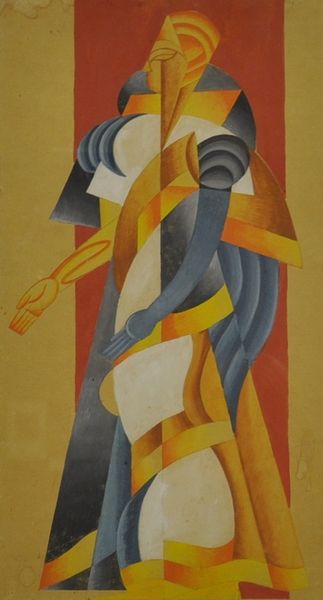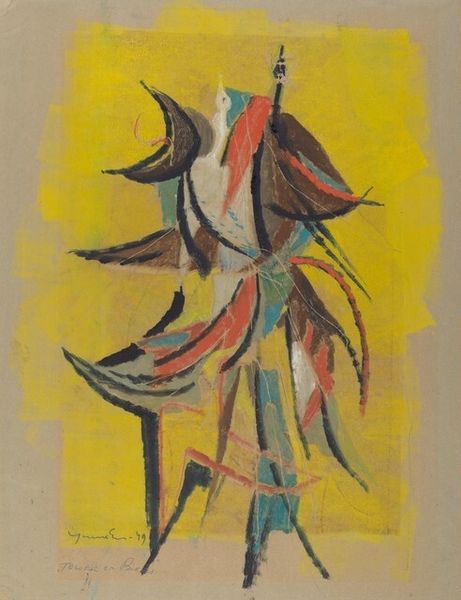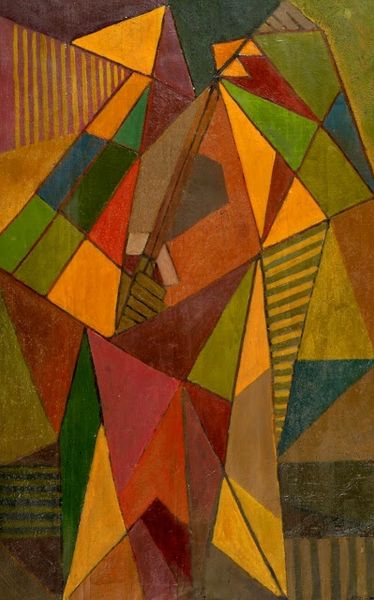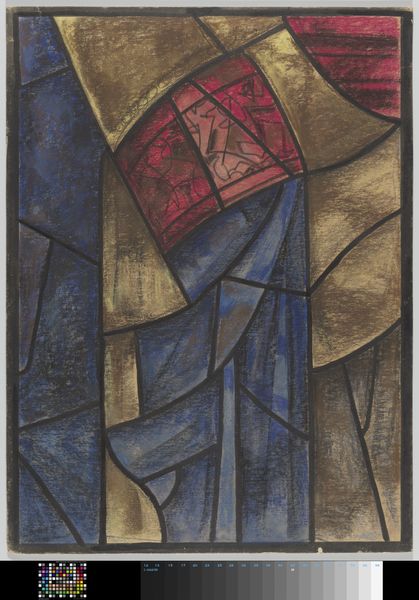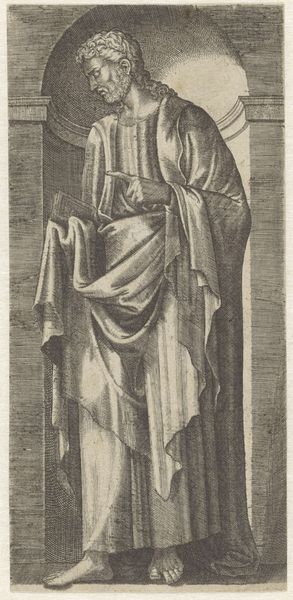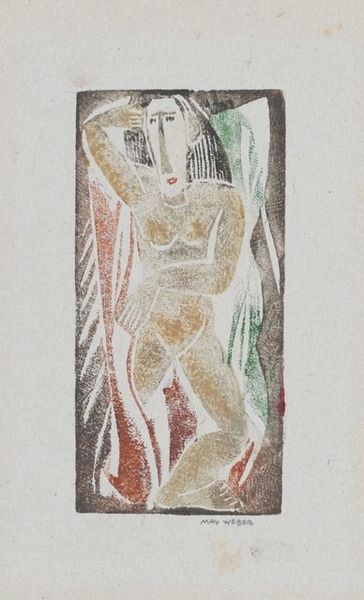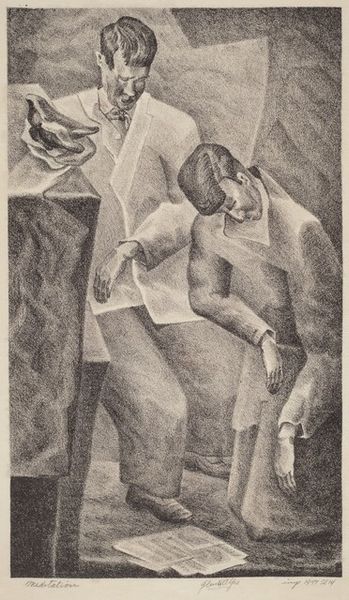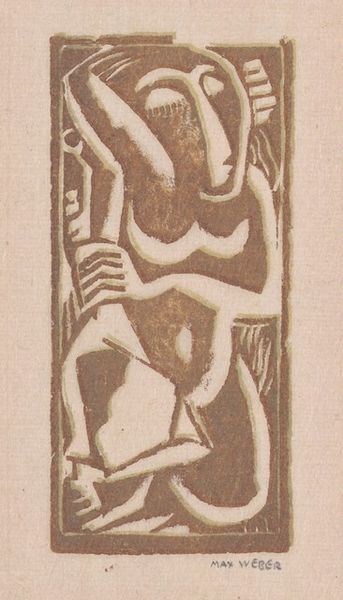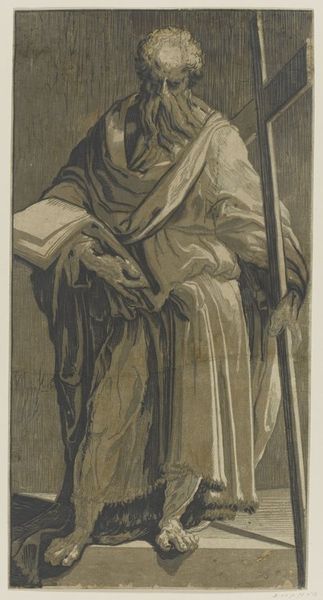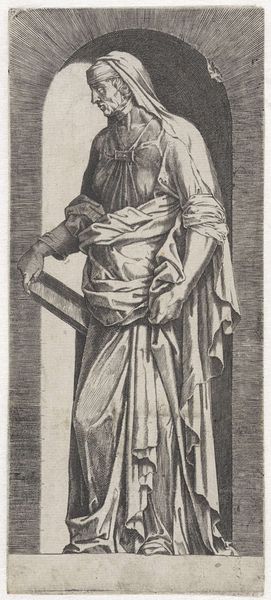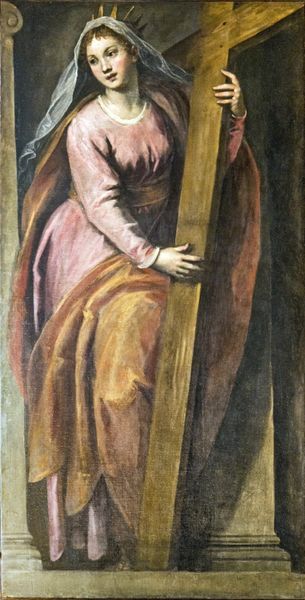
drawing, gouache, watercolor
#
portrait
#
drawing
#
cubism
#
gouache
#
watercolor
#
costume
#
portrait art
Copyright: Public domain US
Curator: Wow, this piece seems so dramatic! Almost theatrical, really. Editor: That’s an interesting observation. We’re looking at “Sketch of the Female Costume for the ‘Assyrian Ballet’” by Vadym Meller, created around 1919, using watercolor and gouache. Quite a combination. Curator: Combination, yes, a dance of sharp lines and swirling color! Meller clearly isn't afraid to make a statement, is he? It looks like a stage presence distilled onto paper. Like the costume, broken down into pure, vibrant energy. Editor: Exactly! Let’s consider how those lines are assembled. The Cubist influence is unmistakable. See how the figure is fractured into geometric planes? It evokes, rather than represents, a sense of dynamic movement. Notice how those geometric shapes intersect, it almost feels like an exploded diagram of the costume, but still maintains a cohesive silhouette. Curator: Oh, I adore that description. It’s more than just a drawing. It's a revelation, stripping away detail to find the essence of this Assyrian ballet. I’m curious about that. What imagery was he aiming for? Editor: Think of the historical context: 1919, post-WWI. Societies were grappling with fragmentation, disillusionment. Assyria, for all its remoteness, might have symbolized a kind of rooted, foundational culture. And, as with most dance costumes, this is about ritual, and disguise. I see her hands positioned as though she's emerging, being reborn almost, which the angular abstraction reflects! Curator: Beautiful! The color palette also strikes me. The earthy tones alongside those bold, assertive yellows… It’s like the ancient world trying to break free from its earthen bonds. And that grey tone of the hands. Editor: Precisely! It suggests both a restraint and a poised tension, perhaps capturing the spirit of a dancer ready to defy gravity. The overall feeling this brings is a kind of… elegant melancholy. Curator: Elegant melancholy – I love it. It captures that bittersweet dance between tradition and modernity, doesn't it? Something powerful about preserving art as if it were memory. Editor: Yes, that's where the work gains traction in memory. I mean, look how shapes turn into images with no logical transition—that’s what dreams do. Curator: Precisely. I am certainly thinking about my dreams now.
Comments
No comments
Be the first to comment and join the conversation on the ultimate creative platform.
